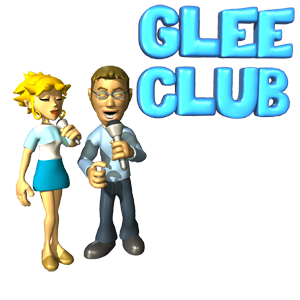Are You a Gleek? Want To Get That “Glee” Sound?

I confess that I definitely am. I love music, recording, singing harmony, and ….well, OK, not high school. What a horror show-except for the music! Choir, musicals, my rock bands, singing Beach Boys and Asia harmonies at Carl’s Junior with my friends–THOSE were the things I loved about high school. And that is what Glee is mostly about. Plus there’s the hilarious Jane Lynch as Sue Sylvester to keep the show from sliding into a pool of syrupy glurge.
But I digress. Have you noticed anything odd about how all the singers sound on that show? The cast members were selected because they could really sing (apart from looking the part and acting and all that too).
But when they produce the musical numbers, the voices sound a bit artificial don’t you think? Every note is perfect–maybe too perfect. It sounds kind of, well, computer-y to some folks. Love it or hate it, this is down to the popularity of an audio processor called Auto-Tune, and its ilk. And it pretty much defines what I am calling the “Glee sound.” and you can have it too, if you want to.
Antares Auto-Tune Vocal Studio Pitch Correcting Software is an awesome tool that can really help in the studio, though like anything else, it can definitely be over-used, and frequently is. The program has two modes that can be used to treat a vocal track, the auto mode and the graphical mode. In auto mode, all the singer’s notes are run through Auto-Tune’s processor and corrected automatically.
The entire track gets washed through a filter that snaps the vocal track’s pitch to a musical grid similar to the way a graphics program snaps shapes to a visual grid. The auto mode is much faster to use. You basically just flip a switch. But when you wash an entire vocal track through the processor, you usually get a somewhat artificial and computer-y sounding product.
The graphical mode is like having the “snap-to-grid” option turned off in a graphics program. It may take longer to get certain things lined up, but at least you can put everything exactly where you want it.
You can SEE the grid in graphical mode, but you choose which notes to correct and which ones to leave alone by dragging the pitch curve from the recorded voice closer to a grid line. You also have several choices as to how intense the corrections you make should be. Generally the smaller and less extreme the correction (just bumping an off-note a bit closer to the target pitch, say) the more natural it sounds. This mode is much more hands-on and takes a bit longer. But it can result in a much more natural sounding product.
If you would like to have that “Glee sound,” all you need to do is add the Auto-Tune plug-in to your pc recording studio software. Don’t have your PC recording studio set up yet? No problem. You can do that in about 30 minutes by following the instructions in the free tutorials at Home Brew Audio, which you can access by clicking right here.
From one Gleek to another…happy recording!
